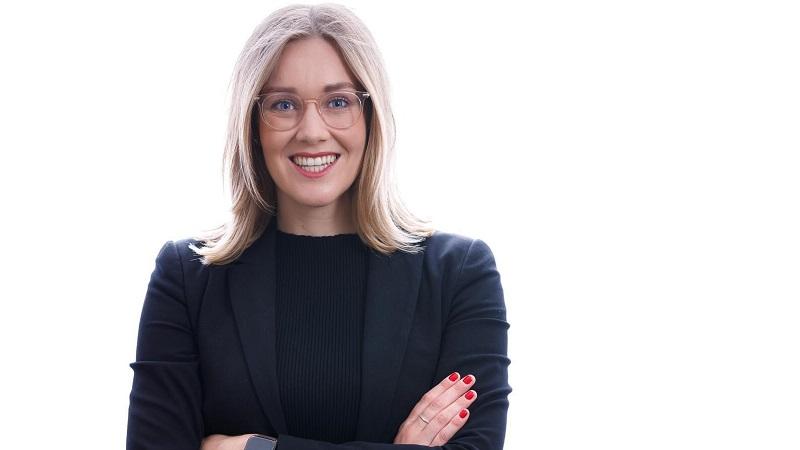In the first of a series of exclusive interviews, the head of government’s ‘Digital HQ’ talks to PublicTechnology about the Central Digital and Data Office’s work to unlock £8bn of digital investment, engage with departmental leaders, and deliver definitively great services
Credit: CDDO
PublicTechnology is delighted to be working alongside the Central Digital and Data Office to gain insights from some of government’s most prominent senior leaders, looking at their, and their department’s digital and data priorities and challenges.
Over the coming weeks and months, CDDO chief executive Megan Lee Devlin will talk to a range of figures including Sir Ian Diamond at the Office of National Statistics, HM Treasury’s head of the Government Finance Function Cat Little and Jo Farrar about her time as Second Permanent Secretary of the Ministry of Justice.
This series of interviews – the Digital Leaders’ Download – will be published regularly on PublicTechnology, covering topics that include what it means to be a leader, plans for service transformation, as well as the difficulties posed by legacy technology and upskilling civil servants.
To kick off the series, we met with Lee Devlin to discuss CDDO’s work implementing government’s digital and data strategy, its ambitions to raise standards across the most significant citizen services, and the importance of gaining the support of senior leaders in government outside of the DDaT profession.
The Central Digital and Data Office, which was spun out of the Government Digital Service (GDS) in 2021, was created to spearhead digital transformation in government, and is responsible for the government’s Transforming for a Digital Future Roadmap 2025.
The kind of digital transformation described in the strategy has long been taking place beyond the boundaries of the Cabinet Office – home to both CDDO and GDS; across the civil service, the DDaT profession is now comprised of 27,000 people, the vast majority of whom are employed by departments and other government agencies.
Their work is typically now much better understood, appreciated – and scrutinised – by colleagues in other disciplines, as well as by senior leaders and ministers.
Or, as CDDO chief executive Megan Lee Devlin puts it: “It’s become increasingly clear over the last five or so years – including in government – that digital is everyone’s business.”

This can necessitate a different, collaborative, approach to pushing forward government’s digital ambitions.
“What we’re fundamentally trying to do in CDDO is make sure that we’re not just working with our community of brilliant technologists within the digital, data and technology community, but work with the various different business components of government – whether that’s policy teams, operational teams, or commercial, project delivery, or finance teams – to ensure that we have the right capabilities and the conditions in place for digital transformation to be achieved,” the CDDO CEO adds. “This is a shift away from digital being a disruptive force, to being collaborative partners that help to translate the government priorities into digitally enabled tools, solutions and services.”
Such collaboration is evidenced by the creation and delivery to date of the Transforming for a Digital Future strategy – which was published last year, and sets out objectives for the three-year period to 2025.
CDDO developed the strategy in concert with a Digital and Data Board of permanent secretaries – six of whom also act as named ‘sponsors’ for the sextet of core missions set out in the roadmap. The board meets every three months to track the progress in implementing the strategy.
Lee Devlin tells PublicTechnology of the importance of this senior support.
“Leaders are absolutely crucial in delivering our aims to transform HMG,” she says. “There are three core roles that leaders play in supporting this agenda; first, putting the conditions and culture in place for their teams to operate effectively – whether that be to experiment, or to operate iteratively using agile principles, or to work in a multidisciplinary team to deliver outcomes that improve the lives and livelihoods of the public. The second, is making sure that they have the right capabilities in their teams, whether development skills, core tech capabilities or analytical skills. And then, thirdly, leaders play a crucial role in role modelling curiosity about new and emerging technologies, and different ways of working, and their potential impact on government and the communities we serve.”
The CDDO chief executive says that these roles – enabling “great digital practices, a focus on data-backed outcomes and impact and a culture focused on learning and curiosity” – are the same that she tries to embody as a leader.
Great expectations
In its capacity of leading the rollout of the three-year digital strategy, the first of the six missions CDDO is delivering is to create “transformed public services that achieve the right outcomes”.
This includes a commitment – perhaps the centrepiece of the strategy – that, by 2025, at least 50 of government’s 75 most widely used and critical services will have achieved a defined ‘great’ standard.
“In CDDO we are effectively ‘Digital HQ for Government’ and so advocating for digital, data and technology and translating the priorities of government into our functional priorities, is a core part of that.”
This definition will be met if a service is rated highly enough against a range of measurements, which Lee Devlin says will be based on “industry-standard metrics”, and will cover two key areas: usability and efficiency.
“In terms of usability, we look at measures like digital completion rates, and customer satisfaction. In terms of efficiency, we look at cost-to-serve and other indicators around automation of operational processes,” she adds. “We are taking best practices from the private sector – and indeed great practices from across government – and scaling those to measure service performance over time. It also provides a very valuable way of making that link between the activities of digital teams day to day and the business outcomes that they’re delivering – and how that’s improving outcomes for the public while ensuring that we’re achieving value for money on taxpayer funds.”
The other missions include: supporting departments’ adoption of the new government-wide One Login system; improving the quality of data and its use in decision-making; boosting the security of technology infrastructure and tackling legacy IT; building digital skills across government; and addressing procedural and structural barriers to transformation – including funding and business-case processes.
These missions were embarked on 11 months ago. As CDDO prepares to provide a one-year update on progress so far, its chief executive says that work to date has focused on “putting the conditions and foundations in place to enable teams in all corners of government to deliver”.
Examples of such foundations being laid include the launch of core elements of the One Login programme and working with service owners to establish the baseline performance of the top 75 services, so as to measure progress over time, Lee Devlin says.
“Similarly in the data space – where one of our core commitments is that critical data assets will be made available for government departments – we’ve been working with teams across government to identify at a whole-of-government level what our critical assets are, and establishing the routes to making them available. We’re building out the central enablers needed to see that delivered,” the CDDO chief adds.
“Another example of that – one that I’m particularly proud of – is in the legacy space, where we’ve made a commitment that all of our red-rated legacy systems will have plans for remediation by 2025. And in the first couple of months, we identified our highest-risk legacy systems across government and are working to ensure that funding that was awarded through the 2021 spending review is being prioritised accordingly.”
‘Digital HQ’
That spending review – government’s first full three-year funding round since 2015 – saw CDDO work closely with HM Treasury to help set levels of support for programmes and operations across departments. A total of £8bn was ultimately committed to enable digital transformation, investment in tech infrastructure, and remediation of cyber risks.
“In CDDO we are effectively ‘Digital HQ for Government’ and so advocating for digital, data and technology and translating the priorities of government into our functional priorities, is a core part of that, ” Lee Devlin says.
2021
Year in which CDDO was spun out of GDS
50
Number of government’s 75 foremost services that will have met a ‘great’ standard by 2025
£8bn
Amount committed in 2021 spending review to support digital transformation and address cyber risk
27,000
Number of DDaT professionals across government
Collaborating closely with the Treasury and engaging with permanent secretaries helps make good on an ambition to be “a force multiplier” for digital and data across government.
This objective – which is also supported by convening networks of departmental leaders in DDaT disciplines – is one of three core roles fulfilled by CDDO, according to the chief executive.
Another key strand of the organisation’s remit is to lead the DDaT function by setting and maintaining standards for departments’ use of technology and data, as well providing a short- and long-term overarching vision for government digital and data.
“The third role that we play is really around people,” Lee Devlin says. “That is about building digital skills and capabilities, both within the 27,000 digital makers in government, and beyond the function – to the half a million civil servants, to ensure they have a great foundational level of understanding of how to use digital and data – particularly in a world of generative AI and all of the interesting trends we’ve seen recently. That includes making sure our cadre of senior civil servants have the right understanding of the digital environment, and the skills and expertise to be able to lead great digital teams effectively.”
Among the commitments set out in the three-year strategy is a pledge to ensure that 90% of all senior officials can demonstrate the skills set out in government’s Digital, Data and Technology Essentials guidance. CDDO’s upskilling efforts also include the new Digital Excellence Programme – a training scheme, which just concluded a pilot in which 300 members of the SCS learnt how to build a culture that is supportive of transformation and makes the most of data.
Lee Devlin says that this focus on digital from government’s senior leaders will only increase as the power and the profile of technology continues to grow – characterised by ever-more eye-catching uses of artificial intelligence and automation.
“I think what generative AI has shown us is that exciting technology can become available at a scale in timescales that we previously couldn’t imagine. And with that comes more excitement than ever on the power of technology to transform the way that we work,” she adds. “We’re all acutely aware of the pace with which technology is moving. The fact that generative AI is doubling in strength every 59 days, means that putting the conditions, capability and culture in place to achieve government’s transformation aims is not nice to have – it is an imperative.”
PublicTechnology will publish the first in our Digital Leaders’ Download series next week, featuring an exclusive conversation between Megan Lee Devlin and Jo Farrar, the former Second Permanent Secretary at the Ministry of Justice – whose brief included HM Prison and Probation Service, the Office of the Public Guardian, Legal Aid Agency and Criminal Injuries Compensation Authority.
Keep a close eye out for the interview, which covers pioneering efforts to eliminate technical debt, the transformative impact of technology for prisoners – and her memories of sharing her first government computer with 20 colleagues.
In the coming weeks and months, we will be publishing interviews with a wide range of senior leaders from organisations including HM Treasury, the Ministry of Defence, HMRC, and the Office for National Statistics.




